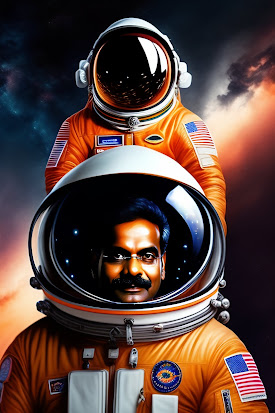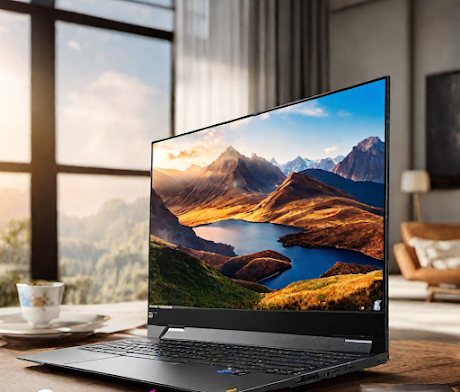CHANDRAYAAN 3- Technology behind the Indian chandrayaan 3
The topic we are covering today is LUNAR MISSION OF INDIA. Chandrayaan-3 is a lunar mission launched by the Indian Space Research Organisation (ISRO) to demonstrate end-to-end capability in safe landing and roving on the lunar surface. The mission consists of a lander, rover, and a propulsion module. The rover and lander are packed with high-quality, exclusive technologies.
Some of the technologies used in Chandrayaan-3 include AI,
cameras, sensors, and there is much more. So space lovers get your notepads ready!
The lander is
equipped with a sensor array comprising velocimeters and altimeters, and a
navigation, guidance, and control system that uses AI and computer logic to
pilot the lander onto the moon.
The rover has scientific payloads to carry out experiments
on the lunar surface, including Chandra's Surface Thermo physical Experiment
(ChaSTE), Instrument for Lunar Seismic Activity (ILSA), and Laser
Retroreflector Array (LRA)
The crazy thing is that INDIA is the first and right now the
ONLY country landing over the SOUTH POLE OF THE MOON. That’s HUGE.
The mission aims to develop and demonstrate new technologies
required for interplanetary missions. Lets have a detailed look over some main
stuff:
Technology behind the historic Chandrayaan 3:
Chandrayaan 3 of INDIA composes of an indigenous Lander
module (LM) being called as Vikram
Lander, a Propulsion module (PM), and a Rover called Pragyan. The Propulsion
module and Lander module, which has the Rover in it have already been
separated. The Lander began the descent phase later on August 23rd 2023 at 5:45
PM IST. Upon landing on the moon’s south pole at around 6:04 PM IST, the Lander
released the Rover on the moon’s surface.
Vikram Lander
The Vikram Lander packs several sensors including some camera
sensors. The sensors on Lander include Ka-Band Altimeter (KaRA), Laser Doppler
Velocimeter (LDV), Laser Inertial Referencing and Accelerometer Package
(LIRAP), Lander Position Detection Camera (LPDC), LHDAC (Lander Hazard
Detection & Avoidance Camera), Laser Altimeter (LASA), Lander Horizontal
Velocity Camera (LHVC), Micro Star sensor, and Inclinometer & Touchdown
sensors.
The Lander carries Radio Anatomy of Moon Bound
Hypersensitive Ionosphere and Atmosphere (RAMBHA), Chandra’s Surface
Thermophysical Experiment (ChaSTE), Instrument for Lunar Seismic Activity
(ILSA), and Laser Retroreflector Array (LRA). Based on the technology and these
payloads, several experiments may get help from this great friend- Lander
module .
Pragyan Rover
Now Coming to the Pragyan Rover, it separates from the
Lander once the Lander reaches the surface of the moon. Then, the Rover communicates
with Lander via technology like Rx/Tx
antennae. Rover’s objective is to navigate the moon’s surface and understand
elemental , physical and chemical compositions. For this, it packs navigation
cameras alongside the antennae. We already got some exciting pictures.
Rover also carries Laser Induced breakdown Spectroscope
(LIBS) and Alpha Particle X-ray Spectrometer (APXS). With the help of these
payloads and technology, Rover will capture and send the earth EXCLUSIVE high-quality information.
AI Automation
And how can we forget artificial intelligence. Interestingly,
Chandrayaan 3’s descent phase is completely automated. It does not include any
human intervention. Once the descent phase begins, the lander is on its own. As
to how it will land, it will use artificial intelligence to map its position on
the moon’s surface.
Propulsion Module
As for the Propulsion Module, it has a smart 440N Liquid
Engine with a star sensor, solar panel, and TTC antenna. It carries the
Spectro-polarimetry of the Habitable Planet Earth (SHAPE). One of its objectives
includes probing into a variety of Exo-planets that would qualify for
habitability.
There is one more amazing thing about it! Russia also launched its Luna 25 on moon’s south pole but It crashed, Anyways well tried. It is to be noted that Chandrayaan-3 is one of the cheapest space programmes ever, even cheaper than many movies’ budgets! Shocking, No?. Russia's Luna 25, which crashed trying to soft-land on Moon's south pole, cost a whopping $200 Million USD.. OMG!. China's mission to the Moon was even more expensive. Let’s not talk about it. But India proved that if resources are utilized in a proper way greatest things can be achieved with minimal budget. PM Modi also congratulated the ISRO team for this applaudable achievement.
So ending with a good note!, Here, we discussed some
exciting and educational facts which can be part of textbooks in future. In the
end, we would just say GREAT JOB INDIA!! CONGRATULATIONS ! This proves how powerful
and important knowing and applying technology is!



Comments
Post a Comment